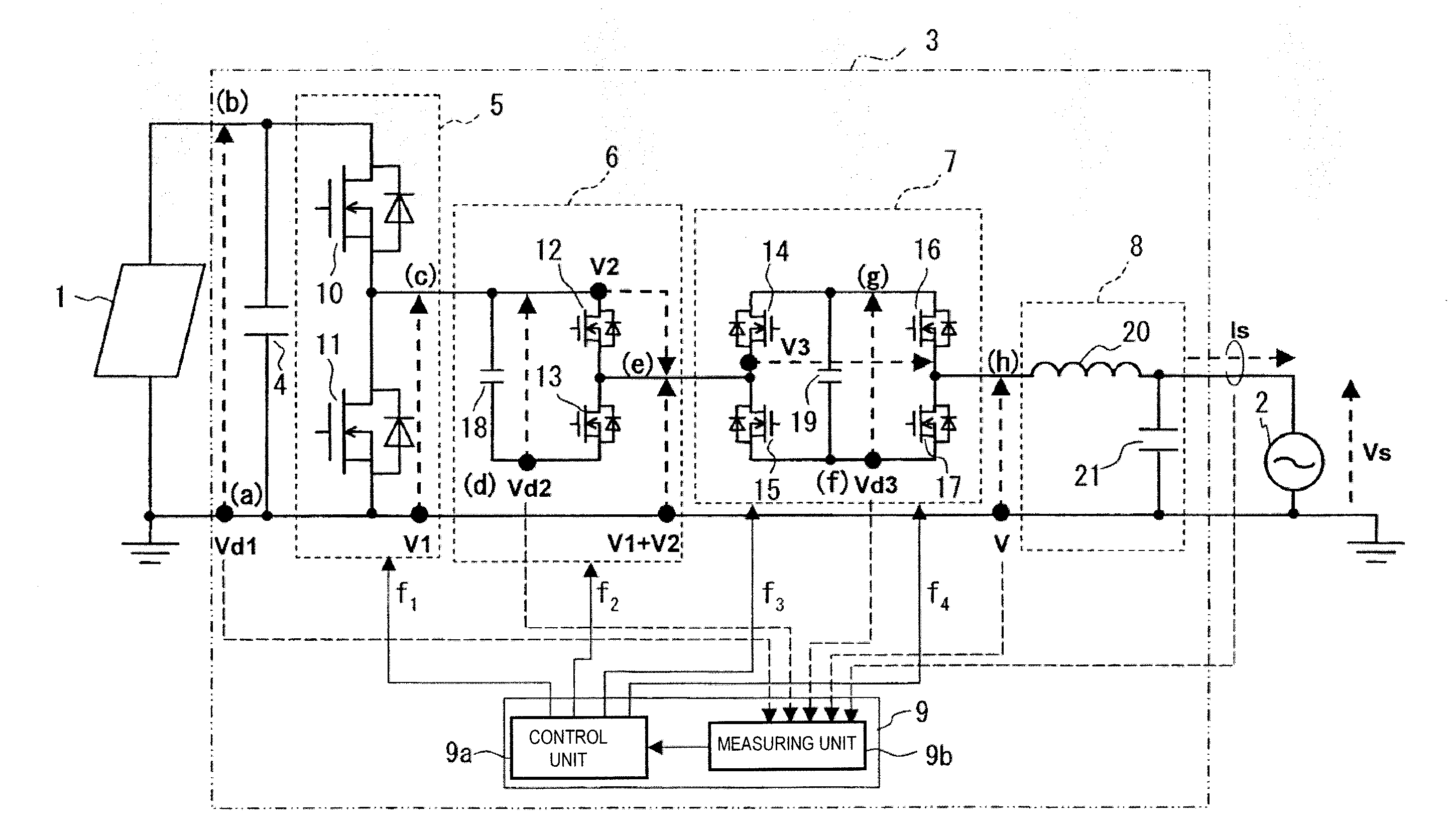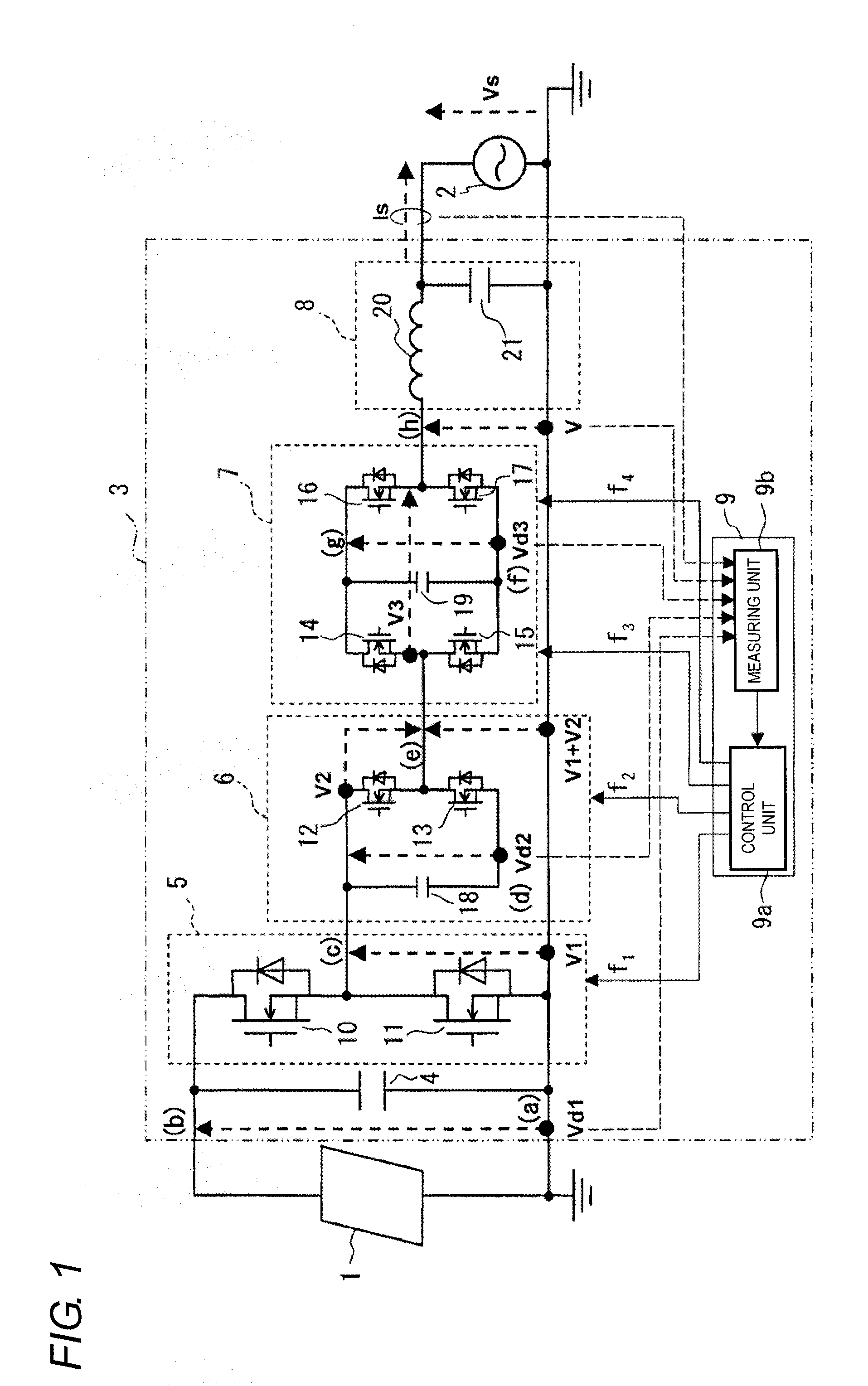Power converter and power conditioner
a power converter and power conditioner technology, applied in the direction of dc-ac conversion without reversal, process and machine control, instruments, etc., can solve the problem of low power conversion efficiency of the power converter provided with the conventional power conditioner b>36/b>, and achieve the effect of reducing switching loss, reducing conduction loss, and reducing switching loss
- Summary
- Abstract
- Description
- Claims
- Application Information
AI Technical Summary
Benefits of technology
Problems solved by technology
Method used
Image
Examples
Embodiment Construction
[0054]Embodiments of the present invention will be described below with reference to the drawings. In embodiments of the invention, numerous specific details are set forth in order to provide a more thorough understanding of the invention. However, it will be apparent to one with ordinary skill in the art that the invention may be practiced without these specific details. In other instances, well-known features have not been described in detail to avoid obscuring the invention.
[0055]FIG. 1 is a configuration diagram of a photovoltaic power system according to one or more embodiments of the invention, and FIG. 1 illustrates a configuration of the single-phase two-wire system.
[0056]The photovoltaic power system of one or more embodiments includes a photovoltaic panel 1 and a power conditioner 3. The power conditioner 3 converts the DC power from the photovoltaic panel 1 into the AC power, and the power conditioner 3 is operated while interconnected to a commercial power source 2.
[0057...
PUM
 Login to View More
Login to View More Abstract
Description
Claims
Application Information
 Login to View More
Login to View More - R&D
- Intellectual Property
- Life Sciences
- Materials
- Tech Scout
- Unparalleled Data Quality
- Higher Quality Content
- 60% Fewer Hallucinations
Browse by: Latest US Patents, China's latest patents, Technical Efficacy Thesaurus, Application Domain, Technology Topic, Popular Technical Reports.
© 2025 PatSnap. All rights reserved.Legal|Privacy policy|Modern Slavery Act Transparency Statement|Sitemap|About US| Contact US: help@patsnap.com



